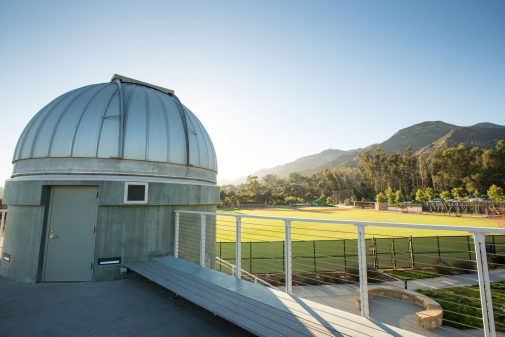Jupiter Jumps into Viewing of March Sky
By
Westmont
 Jupiter returns to the night sky for stargazers at this month’s free public viewing of the stars with Westmont’s powerful Keck Telescope on Friday, March 18, beginning at 7:30 p.m. and lasting several hours at the Westmont Observatory.
Jupiter returns to the night sky for stargazers at this month’s free public viewing of the stars with Westmont’s powerful Keck Telescope on Friday, March 18, beginning at 7:30 p.m. and lasting several hours at the Westmont Observatory.
“At long last Jupiter will be high in the sky during viewing time,” says Tom Whittemore, Westmont physics instructor. “If the seeing is good, we should be able bring out some of the details in the surface structure of Jupiter.”
Earlier in the evening, Whittemore will point the college’s 8-inch refractor telescope at the 11-day-old moon. “The moon will lie very high in the sky in the early evening,” he says. “If the seeing is particularly good, we should be able to make out considerable detail in the large crater, Copernicus. Particularly interesting will be the terracing on the crater’s walls as well as the mountain peaks in the middle of Copernicus. These peaks were left behind as the result of a large impact in the early history of the Moon. Some of the ray structure surrounding the crater, Tycho, should also be evident.”
Finally, the viewing will include several of the brighter open clusters near the top of the sky, such as Messier 35 in Gemini, and Messiers 36, 37 and 38, a wonderful trio of open clusters in Auriga, the Charioteer.
The observatory opens its doors to the public every third Friday of the month in conjunction with the Santa Barbara Astronomical Unit, whose members bring their own telescopes to Westmont for the public to gaze through. The Keck Telescope is housed in the observatory between Russell Carr Field and the track and field/soccer complex. Free parking is available near the baseball field.
Filed under
Academics, Campus Events, Faculty and Staff, Observatory, Press Releases